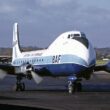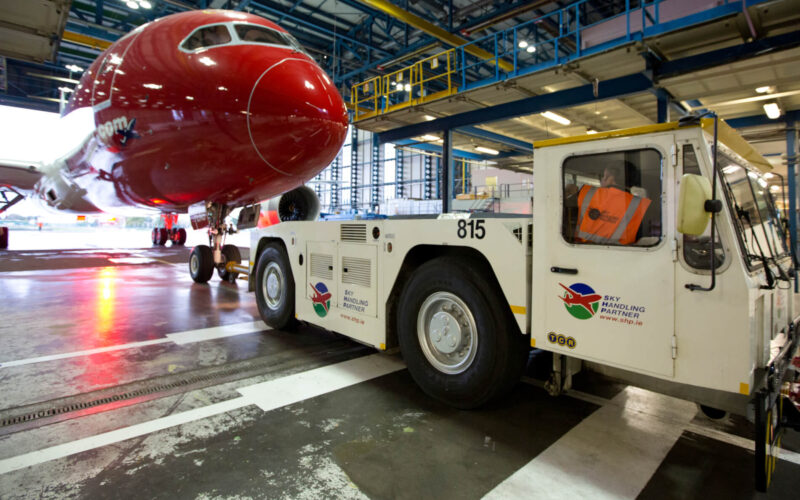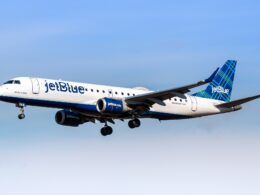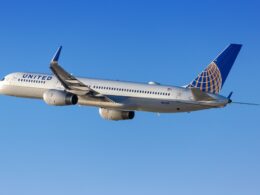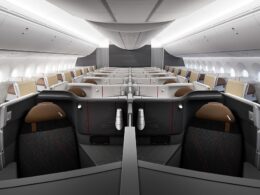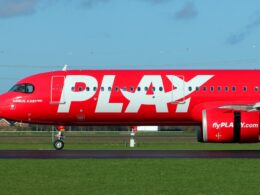While Norwegian Air Shuttle was not a pioneer of the long-haul low-cost business model, the airline became synonymous with it after its competitors, like WOW Air or Primera Air, folded their wings. However, Norwegian was also forced to close its long-haul chapter in January 2021.
The company, which has been operating under an Irish examinership process since November 2020, looked to trim costs in order to continue flying. It also sought out state support from Norway. The government initially refused it, but the tone changed once Norwegian Air announced plans to no longer operate wide-body aircraft. The government agreed to get back to the drawing board to provide some form of state aid for the ailing airline that now would only fly Boeing 737s across Europe.
For now, a red-nosed Boeing 787 flying across the Atlantic Ocean is a sight that will only exist in one’s memories. But has the pandemic only accelerated Norwegian’s process of closing its long-haul chapter or was it always only a question of time?
Iffy start
The beginnings of Norwegian’s long-haul operations were not as smooth as one hoped it would be. Perhaps it was a sign of things to come, as the airline at times struggled with various issues on its long-haul operations.
Initially, the airline was scheduled to start flying across the Atlantic with the Boeing 787 on May 30, 2013. “The establishment of long-haul operations is developing according to plan and the organization is preparing for the first long-haul flight [in May 2013],” read the company’s 2012 financial report. While the demand for tickets on the long-haul network was exceeding the airline’s expectations, preparations to carry out those flights were going less smoothly.
Boeing warned Norwegian that it might be late on the previously agreed schedule. To mitigate the risk, the low-cost carrier indicated that it planned to use “substitute aircraft should the 787 not be delivered in time.” The first delivery of the Dreamliner was almost a month late, as the manufacturer delivered the airline’s first 787 on June 28, 2013.
“This marks a major milestone in our company’s history and I am looking forward to welcoming our passengers on board this brand new aircraft. This is also an important step towards strengthening our position in the market to ensure competitiveness in the future,” at the time stated the now-retired Chief Executive Bjørn Kjos.
The bumpy beginning of the journey continued to be bumpy throughout the year. While in August 2013 Kjos praised the 787 and told the Financial Times in August 2013 that the aircraft was “performing beautifully,” the beauty was washed away by technical issues only a few weeks later. The airline was forced to ground one of its two Dreamliners as the aircraft had broken down multiple times. Enough was enough for the low-cost carrier.
“The aircraft’s reliability is simply not acceptable, our passengers cannot live with this kind of performance,” Reuters quoted Norwegian’s spokesman Lasse Sandaker-Nielsen in September 2013. “We are returning the aircraft to Boeing to improve its reliability.” Instead of the now-grounded 787, the airline turned to Hi Fly and wet-leased an Airbus A340 to replace the Dreamliner – a situation that will only echo in the future.
“We have a strong passenger growth in all markets and we have managed to maintain a high load factor. At the same time, our results this quarter are significantly affected by the additional costs associated with replacement aircraft for the Dreamliner,” commented on the company’s Q3 2013 results Kjos. Still, the airline managed to remain profitable and ended the quarter with a net profit of NOK435.9 million ($51.4 million). The year-end result was still positive, as Norwegian ended its first year of long-haul operations with a net profit of NOK321 million ($37.9 million).
Tooting optimism for long-haul low-cost
The company was very hopeful for the future around the time. A year prior to entering the long-haul market, it placed a massive order for aircraft and indicated that it would want additional 787s going forward.
The airline industry, particularly in Europe, was hit hard by the 2008 financial crisis. For example, in 2009, passenger numbers across the globe shrunk by 0.7%. Meanwhile, in Europe, the number was as much as -1.7%, while across the 27 European Union (EU) member states, passenger numbers dropped as much as by 5.9% compared to a year prior.
“Although the economic crisis happened in 2008, its full impact first reached airlines in 2009. Overall demand – with regard to passenger traffic as well as cargo traffic – decreased and this caused strong turbulences with regard to the financial performance of many European airlines,” was outlined in a report on the airline industry by the European Commission (EC), prepared by German Aerospace Center (DLR). The report highlighted that full-service carriers were particularly exposed – on average, the year was signified by a negative financial result of €300 million ($364.7 million). The following two years, the industry’s health was slowly but surely improving and the EC’s report on the EU air transport 2010 concluded that while the market began to bounce back, “growth in Europe and North America lagged behind that in Asia Pacific, Latin America and the Middle East.”
The void, left by full-service carriers, was slowly being filled by low-cost carriers. Such airlines as Ryanair, Wizz Air, and Norwegian, were only expanding across Europe with their ability to push out full-service airlines with lower operating costs, which result in lower ticket price offerings. Aircraft orders, placed prior to the crisis, were now being fulfilled by manufacturers. In total, both Norwegian and Ryanair ordered a total of 411 Boeing 737-800 NextGeneration (NG) aircraft between 1993 and 2010. At the time, the NG was the newest iteration of the 737 family – making it one of the most efficient narrow-body aircraft at the time.
The main difference, of course, was the fact that Norwegian took one step further: it veered into the long-haul market, trying to take on the big boys on the transatlantic and Europe-Asia connections. On the transatlantic market alone, the three airline alliances (oneworld, SkyTeam and Star Alliance) held 88.6% of the market share according to a joint report by the EC and the DoT, dated November 2010. In essence, full-service carriers absolutely dominated it.
However, with plenty of financial hurt as a result of the crisis, Norwegian seemingly saw an opportunity to chip away at very lucrative routes, like London – New York or Paris – New York, to name a couple of examples. Its first order for the 787 Dreamliner came in November 2010, as the airline signed a Letter of Intent (LoI) with International Lease Finance Corporation (ILFC) to lease two 787s for 12 years.
“This is an important milestone for Norwegian as we have now decided to use the Dreamliner for our long-haul operations. The Dreamliner is an aircraft for the future as it offers a new, improved passenger experience and comfort in addition to reducing operating costs,” commented the airline’s CEO on the LoI. Not even a half-year later, the carrier announced an additional order for three additional Boeing 787 aircraft in May 2011. “Getting hold of an additional three Dreamliners imply that we have secured sufficient capacity for the launch of the long-haul operation. We will operate a fleet of at least four of the most efficient and modern long-haul aircraft already by summer 2013,” Kjos further reiterated Norwegian’s commitment to the long-haul business model in the announcement.
The Dreamliners were not the only aircraft that the airline splashed the cash on. Norwegian announced a record-breaking aircraft order in January 2012 – it signed up for 222 narrow-body jets from Airbus and Boeing. At list prices, the order for 100 Airbus A320neo, 100 Boeing 737 MAX, and 22 Boeing 737-800 NG aircraft was valued at $21.5 billion.
“The idea is to act a little counter-cyclically in these markets. When night is darkest,” commented on the order Kjos.
Turn around, bright eyes
While the airline did definitely see an opportunity and had loads of optimism going into it, aircraft data by Boeing could provide a hint why the model is not as easy as operating short-haul low-cost operations.
The time that it takes to turn around a Boeing 737 MAX 8 and a Boeing 787-8 at an airport is vastly different. According to Boeing Airplane Characteristics for Airport Planning data, the time it would take to service a 737 MAX 8, including deplaning and boarding passengers, loading and unloading cargo, and fueling the aircraft, could take up to 40 minutes. However, typically, low-cost carriers refrain from carrying cargo for the exact reason – it takes up time. Even loading baggage is a time-consuming process. It can take up to 13 minutes to unload the baggage of travelers and up to 20 minutes to load it and it is one of the last actions an operator has to complete before ground handlers can begin the push back. Fueling also could take up to 15 minutes, which when you operate short point-to-point sectors, could once again be reduced, as there are more opportunities to refuel following a short-haul flight.
For example, Ryanair boasted about a 25-minute turnaround time in 2001. According to a brochure, the “fast turnaround times are crucial as it allows an aircraft to do more flights during the course of the day and carry more passengers.”
Reducing the turnaround time can start a snowball effect, whereupon more flights from the same asset (aircraft) could generate additional revenue-generating opportunities. This is where low-cost carriers have an advantage against hub-and-spoke operators, as “a typical hub-and-spoke system requires longer turn-times to allow for synchronization between the feeder network and trunk routes,” read an article by Boeing.
With long-haul flights, much of the advantage that low-cost carriers can create on short-haul itineraries potentially goes out the window. Since the aircraft are, simply put, much larger, refueling, exchanging passengers and baggage, and other typical ground handling procedures will take much longer. Refueling a Boeing 787 takes more than two times longer (35 minutes) than a 737 MAX 8, in addition to the fact that Norwegian also carried cargo on its long-haul flights. While that does increase revenue, it also reduces the potential amount of daily flights one aircraft can do per day. In addition, long-haul flights add additional complexities regarding crew rest, as, for example European Union (EU) law indicates that the maximum daily flight duty period (FDP) is 13 hours. One’s duty is defined as “when the crew member is required by an operator to report for a flight or a series of flights” and concludes “at the end of the last flight on which he/she is an operating crew member,” reads Regulation (EC) No 1899/2006.
So, pilots are only technically able to complete two long-haul sectors. For example, if one were to schedule a flight using a Boeing 787 from London Gatwick Airport (LGW) to New York John F. Kennedy International Airport (JFK) and then from JFK to Dublin Airport (DUB), it would take 12 hours and 31 minutes to complete the journey, greatcirclemapper.net data shows. While the FDP can be extended by an additional hour, it can only be done twice in seven consecutive days. Furthermore, an FDP extension results in extended rest periods, adding further complications in scheduling the next day’s flights.
Ancillaries and fuel cost equation
Another issue that stems from slower turnarounds goes back to the basics of the low-cost carrier model. Low-cost carriers, have essentially unbundled airfares and are offering passengers to buy various services. Whether that would be a bottle of water, seat reservations or seats with extra leg room, these airlines aim to increase their revenue as much as possible. For example, the Ryanair group reported that in FY2019, it earned a total of €7.6 billion ($9.2 billion) of revenue. Out of that sum, €2.43 billion ($2.9 billion) came in the form of ancillary revenue (31.5%). In the same vein, Norwegian indicated that it earned NOK43.5 billion ($5.1 billion) of revenue, with NOK6.6 billion ($779 million) coming in the form of ancillary revenue (15.1%).
For Ryanair, ancillary revenues were enough to cover fuel costs (€2.42 billion ($2.92 billion). For Norwegian, the story was much different – fuel set back the airline as much as NOK12.6 billion ($1.4 billion), almost double that of the ancillary revenue it earned throughout the year. While prior to the COVID-19 crisis the company had indicated that a “New Norwegian” would focus on the Nordic market and proven long-haul routes, the current CEO Jacob Schram had also stated that Norwegian would look to “unlock further customer revenue potential and revenue streams within our business and industry ecosystem.”
“Our customers will be able to take advantage of a digital ecosystem that responds and anticipates how they want to travel and what ancillary services will benefit their journey throughout every touch point,” added Schram in his letter, attached to the airline’s financial results of 2019.
However, once the COVID-19 pandemic began to unravel the world as we know it, the airline was caught with its pants down and it was perhaps too late to add emphasis to more ancillary revenue. The massive expansion, including record-breaking orders and a fleet of 156 aircraft resulted in a massive burden in the form of net interest-bearing debt of NOK57.1 billion ($6.7 billion) at the end of 2019. While the company managed to reduce its debt to NOK51.3 billion ($6 billion) by H1 2020, it was clearly visible that things had to change.
Unfortunate circumstances with the 737 MAX and 787
While there were a few factors that could have influenced Norwegian’s eventual withdrawal from long-haul, a fair share of events outside of its control occurred that could have made a long-lasting impact.
For one, all of the airline’s Boeing 787 aircraft were powered by the infamous Rolls-Royce TRENT 1000 engine. Known for its reliability issues, the engine forced Norwegian to ground aircraft and once again, wet-lease jets from other operators. This time it was also Hi Fly that came into the picture, as the low-cost carrier even leased an Airbus A380 in summer 2018 and summer 2019. Wet-leasing an aircraft is an expensive venture and when you’re running a business model that is reliant on minimizing your costs you are not going to have a good time doing so.
Especially when it was the A380. The double-decker flew into an already overcrowded Terminal 1 at JFK, which on multiple occasions, forced flights with the aircraft to be delayed. Due to EU Regulation 261/2004, passengers were able to claim compensation for delayed flights, which in turn, only hiked operational costs up.
The pain was further exacerbated by the Boeing 737 MAX groundings, which also forced the airline not only to wet-lease additional aircraft but to also cancel some transatlantic routes as the 737 MAX flew between Ireland, the United Kingdom and the United States east coast.
“2019 has seen continued technical fleet challenges from the global grounding of the Boeing 737 MAX aircraft and ongoing Rolls Royce engine issues affecting the 787 operations. Wet-leased aircraft and changes to schedules have mitigated both challenges but has also had a negative impact on commercial performance and passenger experience during the year,” commented the company in its full-year report. Furthermore, Norwegian pointed out that “the negative financial impact of fleet disruptions caused by the grounding of MAX aircraft and continued engine issues on the Boeing 787s is only partly covered by the manufacturers.” All in all, revenue reductions and cost increases had a negative impact of around NOK1.7 billion ($203.3 million), not accounting for indirect negative effects. According to Norwegian, these were “increased passenger service costs, increased fuel burn and lower crew utilization.”
At the same time, one cannot rewrite history. Between 2013 and 2019, when Norwegian operated long-haul flights, the airline managed to achieve a net profit three times. Its last profit of NOK1.1 billion ($131.8 million) was recorded in 2016 (excluding IFRS 16, which requires a lessee to recognize assets and liabilities for all leases that are longer than 12 months). However, the company’s debt, which was used to fuel the massive expansion locomotive, was only growing. Throughout the same period, net interest-bearing debt ballooned from NOK4.3 billion ($515.3 million) to a whopping NOK58.2 billion ($6.9 billion).
Long-haul no more
While Norwegian initially planned to only scale-back its long-haul operations and operate routes that were certain to generate profit, the plans shifted once it was clear that a corner that one can turn was nowhere near.
“We believe in the long-haul low-cost. We need to scale back and we need to rebuild it,” stated Schram during the company’s H1 2020 presentation in August 2020.
A few months prior, in a presentation to bondholders, the airline offered a glimpse into current its situation and plans for the short-term future in April 2020. The company indicated that it was basing its assumptions on two scenarios: a slow recovery, which was also used as the base case, and a fast recovery. The slow recovery scenario pointed out that Norwegian was looking to operate a fleet of seven aircraft until 2021, relying on state subsidies. The airline’s operations would slowly begin to ramp-up in Q2 2021 and a return to full capacity would be achieved in 2022.
In a fast recovery scenario, Norwegian envisioned that it would operate seven aircraft until July 2020, and would gradually ramp-up from Q3 2020. Short-haul capacity would be increased first, with long-haul lagging behind.
However, that was all thrown out the window in November 2020. The Norwegian government refused to provide additional funds for the ailing low-cost carrier, as “the government has concluded that this would not be a responsible use of public funds,” said Minister of Trade and Industry Iselin Nybø.
Not shortly after, the airline sought protection from its creditors in order for it to able to continue flights. Norwegian entered an examinership process in Ireland, akin to Chapter 11 bankruptcy protection in the United States, in November 2020. A month later, the low-cost carrier began its restructuring process in Norway as well. While the year ended without any major developments to Norwegian, 2021 brought significant change to the airline as we know it.
Long-haul low-cost operations were axed in January 2021, as it would once again focus on the market where its roots lie – Scandinavia. A change in the business model resulted in a change of tone from the Norwegian government, which expressed that the new “plan appears more robust than the one we said no to in October,” stated Nybø in January 2021. The minister added that was the reason why the government was now keen to provide a hybrid loan under market terms and under certain conditions that the airline had to meet if it wanted to get support.
The new, post-examinership Norwegian, would look very different to the airline that entered the crisis. Its fleet, which was 156 aircraft-strong at the end of 2019, is planned to be reduced as much as to 68 by 2022. All of the operated aircraft would be Boeing 737s, with a focus on carrying passengers to and from Norwegian’s core Nordic markets. Seemingly, the airline is looking to get back to basics and operate a simple, yet financially viable and sensible model. According to a presentation for investors dated January 27, 2021, Norwegian has built itself a very solid foundation to move forward. It is the leading low-cost carrier in Norway and Denmark and is the second-largest in Finland and Sweden. Furthermore, its brand power is number one in Norway, whereupon out of a total of 100 points (meaning total potential market), it scored 30.3 – leaving SAS in second place with 26.4 points.
For all one knows, the airline could once again return to fly long-haul flights with either the Boeing 737 MAX or the Boeing NMA, when it comes. Even the Airbus A321XLR, if Norwegian decides to keep its Airbus A320neo family orders, is an option on the table. However, as always in life, the big ‘if’ question comes back to the fact whether the airline can muster up the cash to make a comeback to once again fly transatlantic itineraries on aircraft that are less capital intensive. After all, Norwegian already has the know-how – maybe one step back will mean two steps forward?

